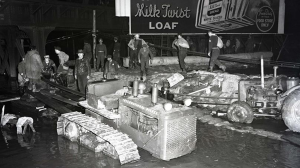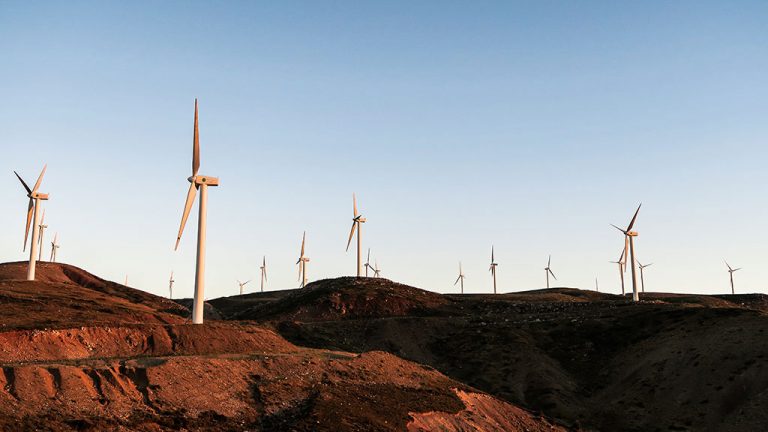With 500,000 pre-stressed concrete cylinder pipes (PCCP) running some 4,000 kilometres through the Sahara Desert, the Great Man Made River Project is the largest PCCP project in the world.
With 500,000 pre-stressed concrete cylinder pipes (PCCP) running some 4,000 kilometres through the Sahara Desert, the Great Man Made River Project is the largest PCCP project in the world.
But monitoring a pipeline that will eventually carry six million cubic metres of water per day from well fields deep in the Sahara to population centres on Libya’s northern coast has been the job of Calgary-based Pure Technologies for the past decade.
Using its SoundPrint acoustic fibre optic (AFO) system, Pure Technologies monitors the nearly $20 billion pipeline for deterioration, allowing the Great Man Made River Authority (GMMRA) to take preventative measures before a section of the pipeline fails.
Mike Wrigglesworth, Pure Technologies vice-president for Europe and Africa, explained that the pre-stressed wires in the project’s four-meter-diameter concrete piping corrode over time and break, which is exactly what his monitoring equipment listens for.
“When the wires break, they release an acoustic energy that goes into the water column itself and that acoustic sound is recorded by our sensors in the pipeline,” he said.
“Our job is to basically detect when and where those individual wires fail.”
Individual hydrophones, which pick up the acoustic energy in the water, are inserted into the pipeline through existing valves and are connected to a data acquisition system by a surface cable.
The sensors are made up of several glass fibres encased in a protective sheath. Using the hydrophone station approach, Pure Technologies is able to monitor 40 kilometres of pipeline per data acquisition system.
“Over time, we’re able to track the deterioration of any particular pipe section, which allows the owner to prioritize repairs and focus their efforts on certain sections that may be deteriorating at a faster rate (than) the rest of the pipeline,” Wrigglesworth said.
“We find about four per cent of the pipe sections are problematic, so that means that it’s just a matter of finding those four per cent.”
But, preventative monitoring wasn’t always the case with the project.
In 1999, 15 years after the project had started, the GMMRA experienced its first pipe failure along the Sarir-Sirt line.
A month later, another failure occurred on the parallel Tazerbo-Benghazi line.
By April of 2001, the project had experienced a total of five pipe failures, all caused by chloride-induced corrosion of the pre-stressing wire.
Wrigglesworth said that the failures led to an aggressive rehabilitation project, where the GMMRA replaced or repaired thousands of pipe sections and began monitoring their system to prevent future failures.
“Since that time, they’ve also been very aggressive with their use of technologies and they’re now leaders in the world,” Wrigglesworth said.
“Other water utilities around the world now look to the Great Man Made River Authority to see what they’re doing. It’s now one of the best-managed pipelines of its type in the world.”
In North America the technology is less common, but Wrigglesworth said it is gaining steam.
“It’s certainly a niche product for a niche type of pipeline,” he said.
“These are always for large diameter transmission mains.”
The Pure Technologies VP said there are about 20 such systems in all of North America, and that the Washington Suburban Sanitary Commission and San Diego County Water Authority are using the technology to monitor their PCCP infrastructure.
“It’s certainly becoming more accepted as a way to manage the pipelines and to delay the large capital expenditures that may be required if you’re looking at replacing a pipeline or doing major rehabilitation such as slip lining,” Wrigglesworth said.
“You’re looking at a large capital expenditure and this technology is being used by utilities throughout the States to allow those large expenditures to be delayed over time.”
Although the technology is gaining in acceptance, the GMMRA continues to be Pure Technologies largest client.
The company recently announced a $5 million deal to provide the GMMRA with technical support through 2012.
It includes a plan to establish a joint venture with the authority to install and operate the existing monitoring equipment, as well as equipment that will be installed as the project expands.











Recent Comments
comments for this post are closed